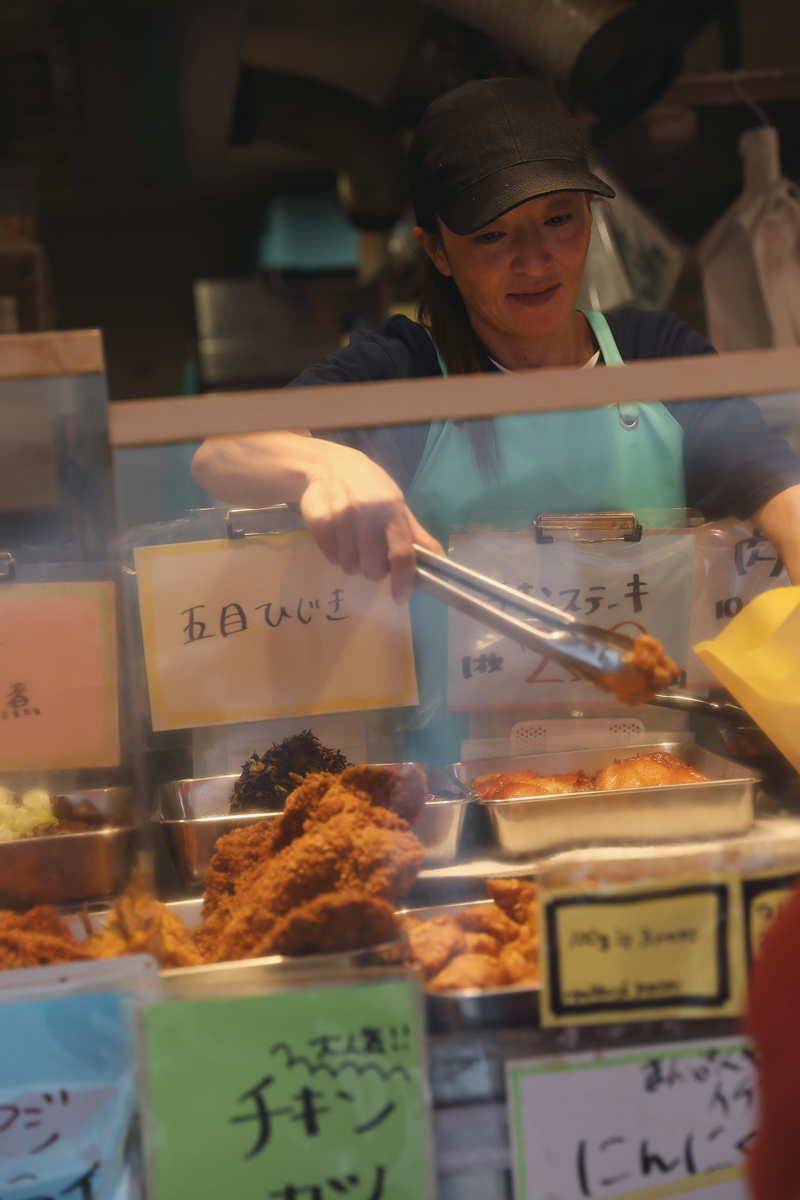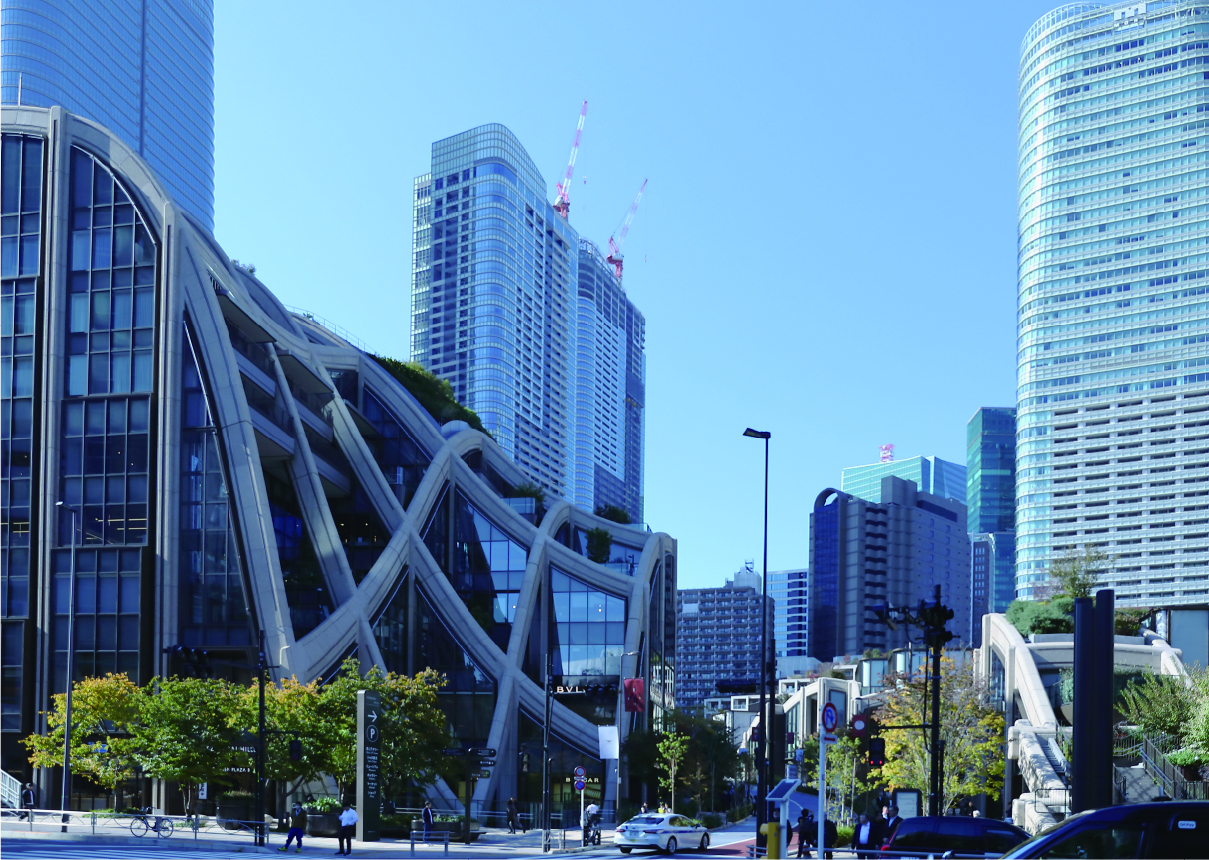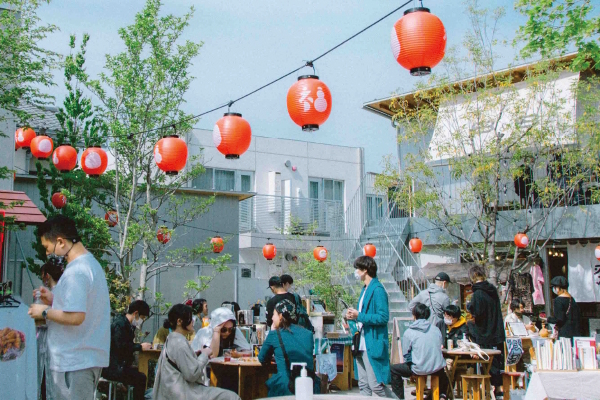センベロで有名な下町に、新しい風景をつくる立石の再開発。
Feature | 2024.12.13

美味しいもつ焼きや煮込みの店がある立石。
お酒好きの人に愛されてきた下町。
ここにいま、高層ビルが建とうとしている。
センベロという言葉がある。千円でベロベロに酔える店のことをいう。そんなセンベロの聖地といわれているのが立石。葛飾区に位置し、京成線の立石駅がある街。
立石では駅前の再開発が進んでいて、駅の北側はさら地になっている。一方の南側も間もなく再開発の手が入るという。ここもさら地になる日が近い。
立石には安く美味しく飲み食いできる名店がいくつもあった。例えば、北側には「江戸っ子」、南側には「宇ち多”」。「宇ち多”」はいまも営業をしていて、いつも長い行列ができている。その他にも鶏のうまい店、絶品の水餃子の店、そして呑んべ横丁には小さなスナックやバーが軒を連ねていた。
カウンター中心のもつ焼き屋にぎっしり入った客。ぎゅっと詰められ、串焼きの煙に巻かれてモツ、ガツ、シロと食が進み、ハツモトのこりこり感を楽しみながらアルコール多めの酎ハイを呑むうちに、隣の見知らぬ人と話しが盛り上がる。意気投合して、2軒目は呑んべ横丁のスナックへ。
呑んべ横丁のスナックはどこも、これがまた狭い。中にはママがひとり。ママといっても自分の母親くらいの年格好、つまり世間でいうおばあちゃんくらい。「あら、いらっしゃい」「まったく久しぶりね」「どうなの仕事のほうは」としわがれた声で言ってくる。よく “帰ってきたと思わせる店” があると聞く。その “帰ってきた” という感覚が実感できる。ママの存在、店内の雰囲気、そして立石という街が、そんな感覚を呼ぶ。
呑んべ横丁があったのが駅の北側。そこはすでに重機が入り工事が進んでいる。葛飾区のホームページには、ここには36階と13階の2棟のビルが建ち、庁舎や住宅、店舗、オフィスなどが入ると書かれている。よくいう複合開発だ。そうして街のにぎわいを創出し、防災性の強化を図り、安全・安心な街づくりを目指すという。神宮外苑のホームページ同様、こちらも耳障りがいい。
駅の南口は、いまはまだ手が付けられていない。しかしここも近いうちに工事に入る予定だ。そして生まれるのは32階のビルと3階の建物。そこには北口と同じように住宅、店舗、オフィスなどが入る。つまり立石は将来、駅の両側に2つのタワーマンションと1つのビルがある、都心のそこらへんにある風景となんら変わらないものになる。
街の魅力ってなんだろうかと、この頃はよく考える。新しくなり、どこにでもあるチェーン店があり、タワーマンションに人が住めば、それは魅力的な街なんだろうか。それよりも、年月とともに想い出や愛着が積み重なっているほうが魅力なのでは。汁を継ぎ足すことで煮込みの旨味が深まるように。そういえば立石には煮込みの名店も多くあった。
この再開発を契機に、新しい立石らしさが生まれることを期待している。
Redeveloping Tateishi:
Transforming a Downtown Area Famous for Its Drinking Dens.
Tateishi, known for its delicious grilled skewer and stew eateries, has long been a beloved downtown area for drink enthusiasts. But now, high-rise buildings are set to redefine its skyline.
Tateishi is often hailed as the mecca of senbero, which refers to places where you can drink yourself happy for just 1,000 yen. Located in Katsushika Ward, with Keisei Tateishi Station at its heart, the area is undergoing extensive redevelopment.The land north of the station has already been cleared, and soon the south side will follow suit.
Tateishi was once home to numerous affordable and delicious eateries, such as Edokko to the north and Uchida to the south—Uchida still operates today, with its ever-present long lines. Beyond these iconic spots, the area boasted excellent yakitori, standout gyoza shops, and the nostalgic Nonbe Yokocho, a narrow alley lined with tiny bars and snack joints.
Packed counters in yakitori shops buzzed with life, as patrons enjoyed skewers of motsu, gatsu, and shiro, washed down with strong chu-hi. Strangers became friends, often heading to a second bar in Nonbe Yokocho, where snack bars offered cramped but cozy spaces.
Inside, a lone mama-san, often the age of one’s grandmother, would greet you with a raspy, “Oh, welcome! It’s been so long. How’s work?” These places felt like coming home—a sentiment deeply tied to Tateishi itself.
But the north side of the station, once home to Nonbe Yokocho, is now a construction site. According to Katsushika Ward’s website, the redevelopment plan includes two buildings, 36 and 13 stories tall, housing municipal offices, residences, shops, and offices—a typical mixed-use development. As with other projects, it promises to revitalize the area, enhance disaster preparedness, and create a safer, more vibrant city. Likewise, Jingu Gaien’s website also makes pleasant promises. The south side remains untouched for now, but construction is scheduled soon, with a 32-story tower and a 3-story complex planned. Like the north, they’ll include residential, commercial, and office spaces. The result? Tateishi will eventually resemble many other urban areas, with towering mansions and chain stores.
It makes you wonder: what makes a city’s charm? Is it sleek new buildings, chain stores, and dense residential towers? Or is it the memories and affection built over time, much like the depth of flavor in a stew enriched by multiple additions of broth?
Tateishi’s many famed stewed dish restaurants come to mind as I reflect on the changes.
I can only hope that this redevelopment brings about a new sense of Tateishi-ness, preserving some of the soul that made this place special.




閲覧中の特集はこちら





